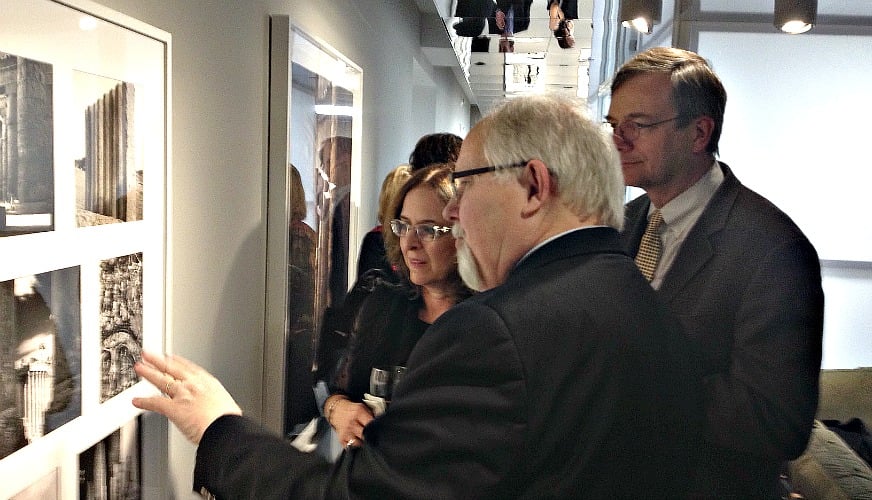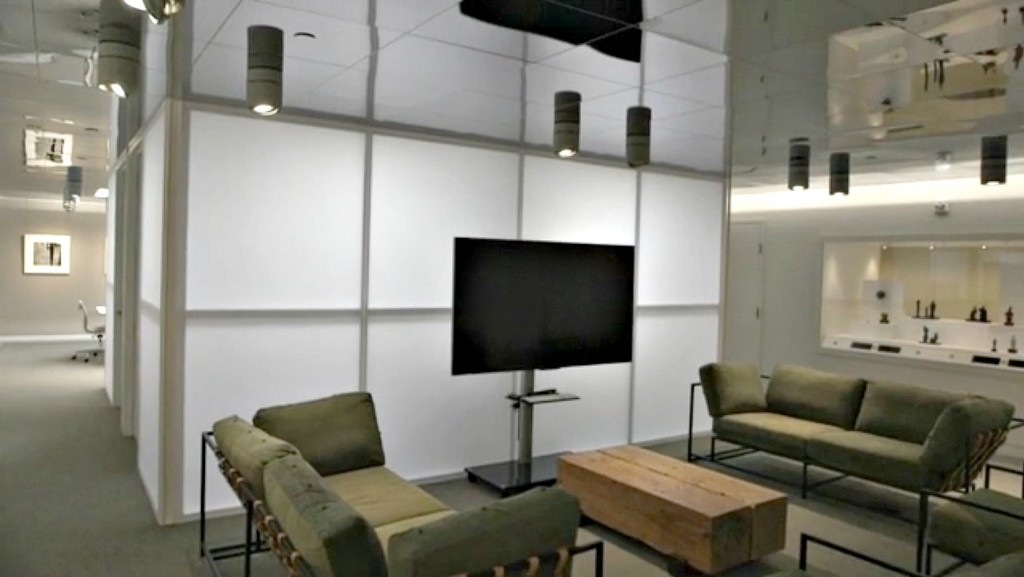UTD’s Brand-New Art Research Center — Is Inside The DMA
ArtandSeek.net December 1, 2015 22
Dr. Richard Brettell, director of the Edith O’Donnell Institute of Art History at UTD, discussing the photos of Carolyn Brown on display in the new O’Donnell research center at the DMA. Photo: Jerome Weeks
The Edith O’Donnell Institute of Art History opened only a year ago on the UTD campus — with a $30 million endowment. Even so, Tuesday night, the institute was officially opening a brand-new wing. But this new research center is not at UTD in Richardson – it’s inside the Dallas Museum of Art.
In a nearly half-million dollar re-do, a suite of offices and study rooms was designed by Dallas architect Russell Buchanan and built in the DMA’s second floor. The O’Donnell Institute is linked to major art history archives and centers in France and Italy as well as other museums in North Texas. But Richard Brettell, the director of the O’Donnell Institute, says the collaboration between UTD and the DMA is unprecedented.
“It’s the first time that a major urban art museum has dedicated a space for advanced art historical research in the museum,” Brettell said, “not across the street, not down the block but in the museum.”
The UTD-DMA partnership has previously led to a joint appointment: Dr. Sabiha Al Khemir is both the DMA’s senior adviser for Islamic art as well as the distinguished scholar of Islamic art in residence at UTD. And David McPhail of the Imperial College, London, has recently been given the distinguished chair in conservation science at UTD — an appointment that will foster new co-operations with the DMA’s conservation studio, led by Mark Leonard.
The Kimbell Art Museum, Brettell said, has some 400 masterworks — permitting extensive scrutiny of them, and they’re all conventional Western works of painting and sculpture. Meanwhile, the DMA’s 23,000 art objects include not only such artworks but everything from Moroccan veils and African masks to major silver and furniture collections. The partnership with the O’Donnell Institute, Brettell said, will bring increased attention to the DMA’s holdings, notably the Keir Collection, one of the largest troves of Islamic art in the world. UTD’s graduate students and scholars will benefit from such access — and their interaction with a working museum — but the knowledge gained from all of this new research will ultimately expand the public’s awareness and appreciation of the DMA’s permanent collection.

The new research center at the DMA was designed by Dallas architect Russell Buchanan. Photo: Quin Matthews.









